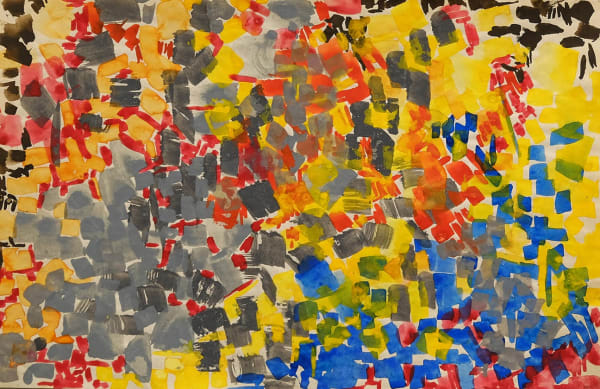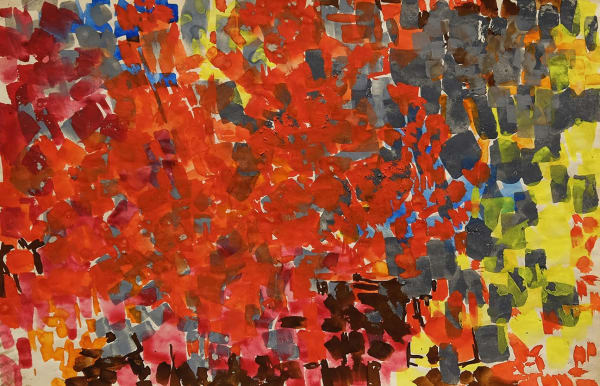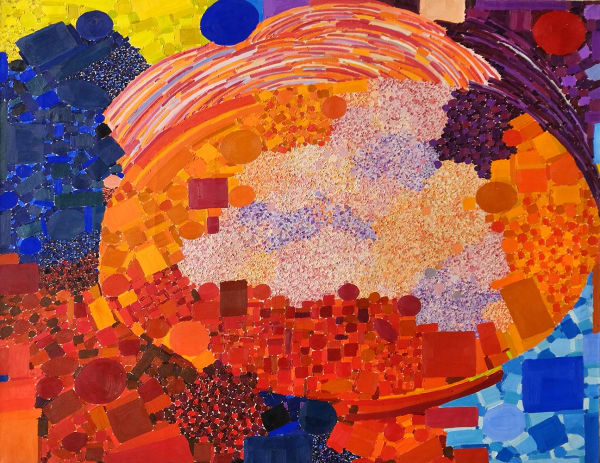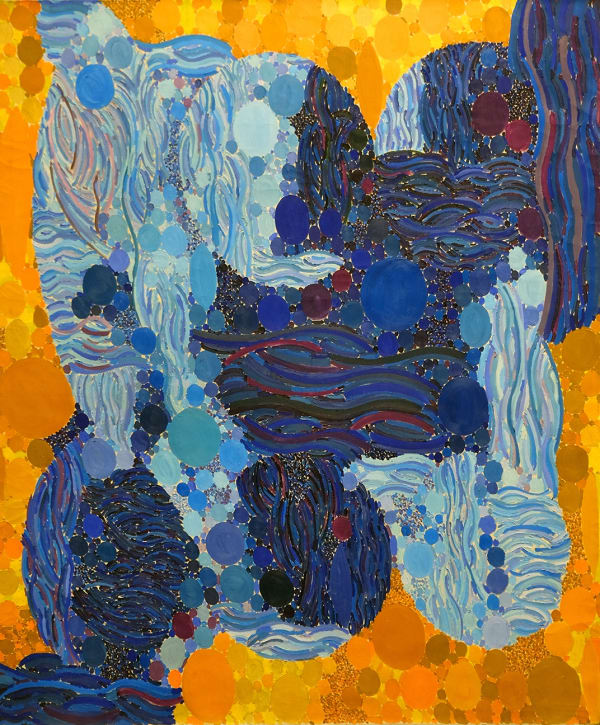"Then, at Colonial Williamsburg in her late twenties, Lynne Drexler met modernist architect Howard Bernstein, who she said had once worked for Le Corbusier. He and one of her teachers at William and Mary, encouraged the young artist to think about moving to New York to learn more about the contemporary art scene. Drexler was further aided in this endeavor by the artist Peter Kahn, who was teaching at nearby Hampton Institute. He suggested that she contact his brother, the painter Wolf Kahn, and Hans Hofmann, who ran the leading modernist art school in New York City.
So in 1956, Lynne Drexler moved to New York and quickly immersed herself in the Abstract Expressionist movement. She received a one-year scholarship to the Hans Hofmann School of Fine Arts that included a stay at his summer school in Provincetown. She eventually went on to study with Robert Motherwell at Hunter College in 1958. Both Hofmann and Motherwell influenced her early work and convinced Drexler to pursue her painting on a full-time basis. Prominent figures of the New York School in the late 1950s, each of these first-generation Abstract Expressionists provided Drexler with important lessons on becoming a painter—personal and professional.
Born in Germany, Hans Hofmann (1880-1966), had come to the United States in the early 1930s to teach modern art. He was an important conduit for many young American artists because of his first-hand experience with the origins of the modernist movement. During his own student days in Paris from 1903 until 1914, Hofmann had known the giants of European modernism: Picasso, Braque, and Matisse. Forced to return to Germany because of the outbreak of the first World War, Hofmann was instrumental in preserving many of painter Wassily Kandinsky’s early works. During the 1920s, he opened his own art school in Munich that had annual summer sessions in resorts all over Europe. When he came to New York in 1934, he continued a similar schedule of classes, with winter sessions in the city and summer sessions in Provincetown, Massachusetts. It was from Hofmann that Drexler learned the formal principles of modernism.
Hofmann believed that the origins of art, even abstract painting, derived from nature. By observing the way in which objects were situated in space, an artist gained a fuller understanding of the concepts of volume and void. His most famous tenet was the concept of “push and pull.” As he saw it, “the mystery of plastic creation is based upon the dualism of the two-dimensional and the three-dimensional” and “only from the varied counterplay of push and pull, and from its varied intensities, will plastic creation result.” Combined with his ideas about the use of color, this same formal approach to abstraction underlies all of Lynne Drexler’s art. Following Hofmann’s teachings, Drexler’s use of color determined the forms in her paintings, not vice-versa as had been taught in traditional, academic art schools. Hofmann believed that colors should be separated by intervals and that the relationship between colors should create formal tension across the surface of a canvas."






